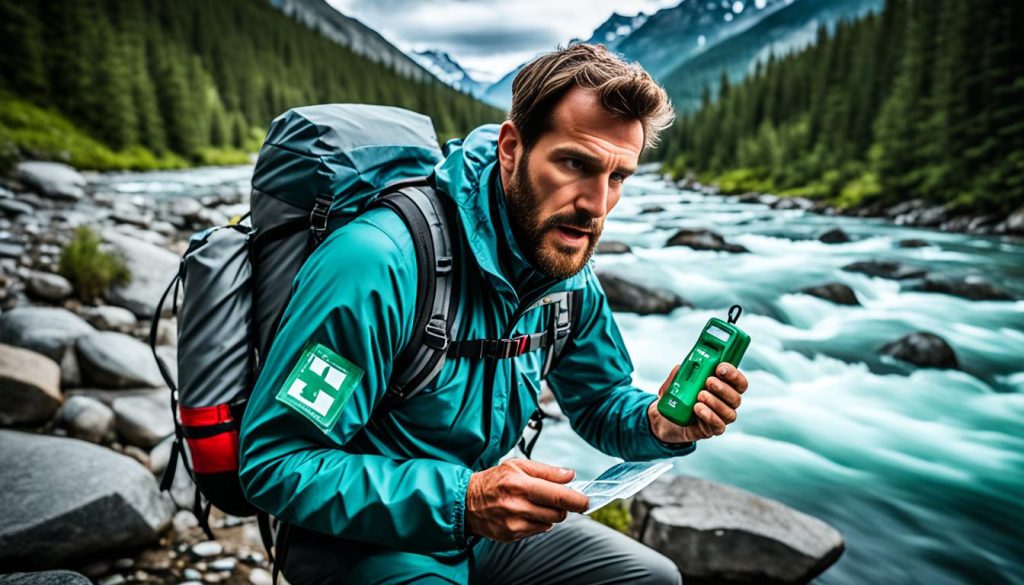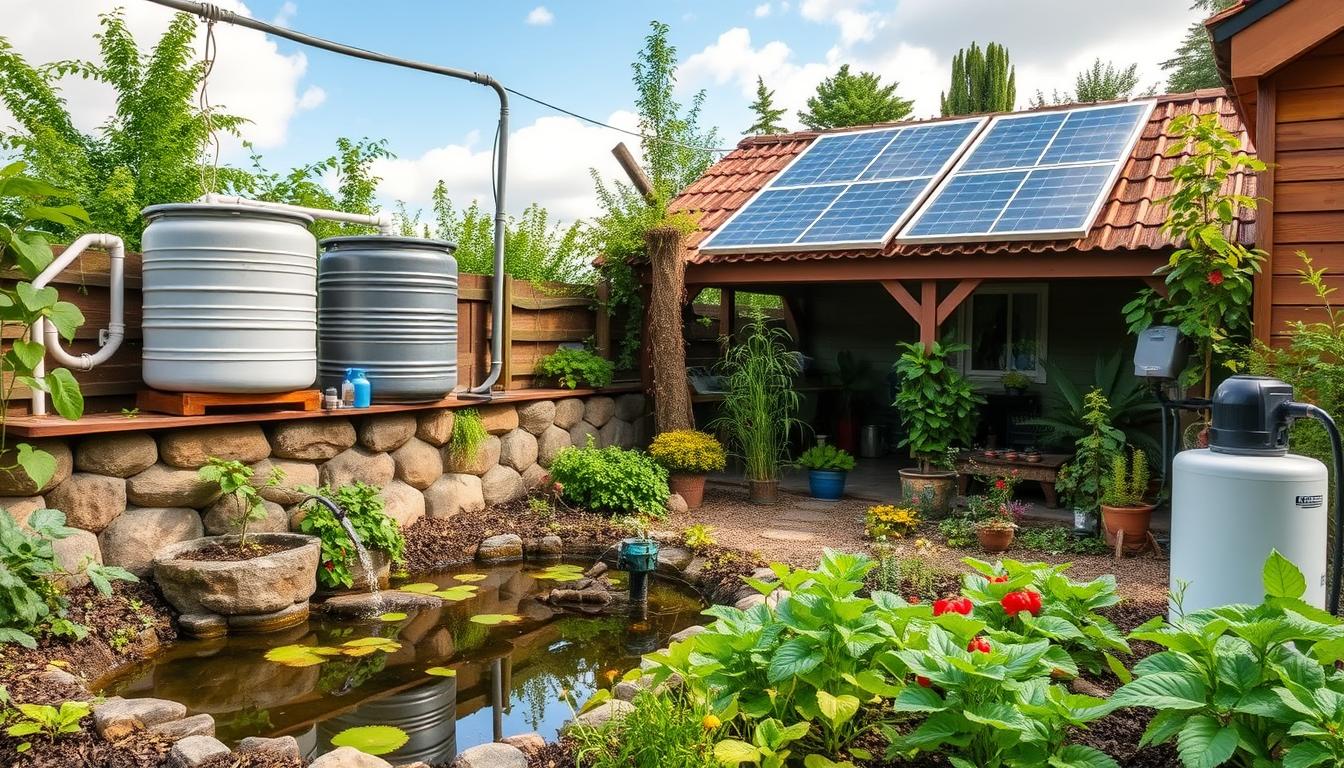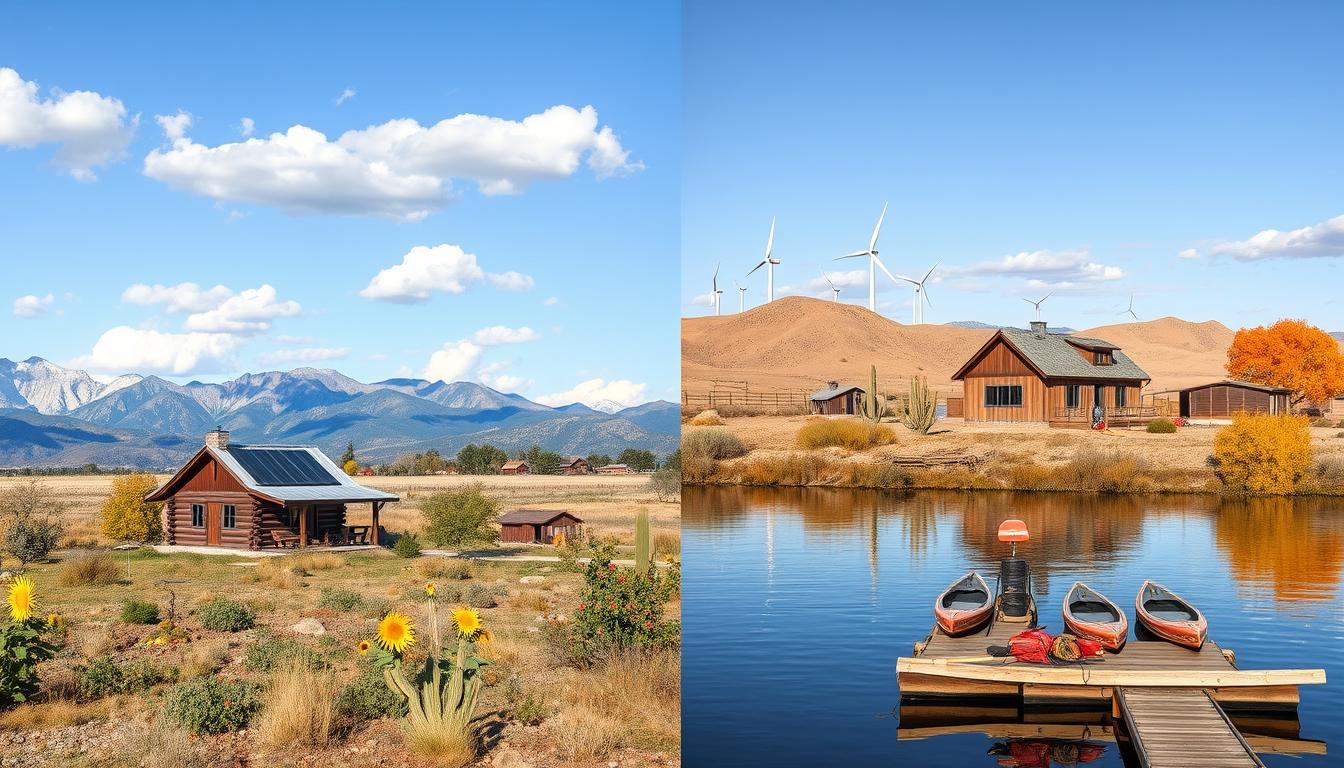When emergencies or outdoor adventures come unexpectedly, having survival first aid skills and medical preparedness is key. This guide will give you the knowledge and techniques for many medical situations. It helps you stay safe and healthy, no matter what happens.
Key Takeaways
- Understand the importance of survival first aid and medical preparedness
- Learn how to identify and respond to life-threatening situations
- Discover the essential supplies and equipment for a comprehensive survival first aid kit
- Master crucial survival first aid techniques for treating common injuries and illnesses
- Develop crucial wilderness survival skills for navigation, shelter, and water/food procurement
Importance of Survival First Aid
In emergencies, survival first aid is key when regular medical help isn’t there. It’s vital for reacting right and saving lives. Knowing how to handle life-threatening situations and being ready for emergencies is crucial.
Understanding Life-Threatening Situations
Spotting and dealing with life-threatening situations is key in survival first aid. This means knowing how to stop severe bleeding, treat shock, clear airway blockages, and manage injuries. By learning these signs and how to act, people can quickly and effectively help in critical times.
Preparing for Emergencies
Getting ready for emergencies is a must for effective survival first aid. This means putting together a good first-aid kit, learning emergency steps, and practicing life-saving skills. Being proactive helps people respond better in sudden crises, leading to better outcomes.
Survival first aid is more than just skills; it’s a safety net in emergencies. By knowing how to handle life-threatening situations and being prepared, people gain the confidence and skills to give vital care when it’s needed most.
Building a Survival First Aid Kit
Creating a survival first aid kit is key to being ready for emergencies. This guide will show you what supplies and equipment you need. This way, you’ll be prepared for any situation.
Essential Supplies and Equipment
Start by gathering these important items for your kit:
- Bandages in various sizes, including adhesive bandages, gauze pads, and roll gauze
- Antiseptic wipes, antibiotic ointment, and antiseptic spray to clean and treat wounds
- Pain relievers like ibuprofen or acetaminophen, and anti-inflammatory medication
- Thermometer, medical tape, scissors, and tweezers
- Tourniquets, emergency blankets, and CPR masks for emergency situations
- Disinfectant, hand sanitizer, and soap to maintain hygiene
- Any necessary personal medications or prescription drugs
It’s important to include a variety of items in your kit. This way, you can handle everything from small cuts to serious injuries. With the right supplies, you’ll be ready for any emergency.
“The best survival first aid kit is the one you have with you when you need it.”
Survival First Aid Techniques
When you’re in a survival situation, knowing the right first aid can mean life or death. We’ll cover the key skills and steps for effective first aid in tough times.
Wound Care
Proper wound care stops infections and helps wounds heal. Learn to clean, dress, and bandage different wounds, like cuts and deep cuts. Know how to stop bleeding and avoid more harm.
CPR and Emergency Resuscitation
Knowing CPR and emergency resuscitation is crucial. Be ready to do chest compressions, rescue breaths, and use AEDs for cardiac arrest. Taking CPR training ensures you act fast and with confidence in emergencies.
Splinting and Immobilization
For fractures, sprains, or dislocations, splinting and immobilizing is key. Learn to keep injured limbs and joints stable to prevent more damage and ease pain. Get familiar with using makeshift splints and other items in survival situations.

“Preparedness is the key to effective survival first aid. The more you know, the better equipped you’ll be to handle any medical emergency that comes your way.”
Mastering these survival first aid techniques prepares you to give life-saving care. It ensures the safety of you and your loved ones in emergencies. Prepare now so you can act with confidence when it counts.
Treating Common Injuries and Illnesses
Surviving in the wild or during a disaster means handling injuries and illnesses. You’ll need to know how to treating wounds and deal with fractures and sprains. Having the right first aid skills is key to staying healthy.
Wound Care
Cleaning wounds right is key to avoiding infections and helping them heal. Begin by washing the wound with clean water and a gentle soap. Then, put on an antiseptic cream or ointment, and cover it with a clean bandage. If the wound is deep or won’t stop bleeding, get medical help right away.
Fractures and Sprains
Knowing how to spot and treat fractures and sprains is vital. If you think a bone is broken, make sure to immobilize the limb and use a cold pack to reduce swelling. For sprains, rest the area, use ice, and wrap it with a compression bandage.
Handling injuries and illnesses in survival situations requires staying calm. By learning these basic first aid skills, you’ll be ready to take care of yourself when medical emergencies happen.
“The best first aid is prevention. Knowing how to avoid and recognize potential hazards can go a long way in keeping you safe and healthy in a survival situation.”
Survival first aid
Knowing how to handle first aid in survival situations is key. It covers many important skills and techniques. These can help you act right when you face serious incidents. They help with injuries and medical emergencies, which can be lifesaving.
Let’s look at some key parts of survival first aid:
- Injury Assessment and Treatment – Fastly checking how bad wounds are, stopping bleeding, and dressing them right can save lives in emergencies.
- CPR and Airway Management – Knowing CPR and keeping airways open can help someone having a heart or breathing problem.
- Fracture and Splint Management – Setting broken limbs and joints right can stop more harm and pain until help comes.
- Infection Prevention and Control – Knowing how to keep wounds clean and prevent infections is key to avoiding more problems.
Learning these survival first aid skills makes you ready to act calmly and right in emergencies. It’s best to learn these skills before an emergency happens.
“The most important first aid skill is the ability to remain calm and think clearly in an emergency.”
Wilderness Survival Skills
Surviving in the wilderness needs special skills. You must know how to navigate and build shelters. These skills are key to staying alive in remote places.
Navigation and Shelter
Learning to navigate is key to staying safe in the wild. Get good at using a compass and reading maps. Knowing how to spot natural landmarks helps too.
Building strong, weatherproof shelters is also crucial. Use materials from nature to make shelters that keep you warm and dry.
Water and Food Procurement
Finding clean water and food is essential for survival. Learn how to find, clean, and store water from different sources. Also, know how to forage, hunt, and trap for food.
By improving these wilderness survival skills, you’ll be ready for any challenge. Being prepared and practicing is the best way to succeed in the wild.

“The greatest weapon against stress is our ability to choose one thought over another.” – William James
- Develop proficiency in reading maps and using a compass for navigation.
- Learn techniques for constructing sturdy, weatherproof shelters from natural materials.
- Acquire the skills to locate, purify, and store water in the wilderness.
- Master the art of foraging, hunting, and trapping to supplement your food supply.
Mental Preparedness for Survival Situations
Surviving a crisis or emergency is more than just being physically ready. Having a strong mind is key to bouncing back and getting through tough times. When you’re facing mental preparedness for survival situations, staying calm, focused, and resilient is crucial.
Managing your feelings is a big part of being mentally prepared. During emergencies, stress, fear, or anxiety can spike. Learning to control your emotions helps you think clearly and make good choices. Deep breathing, meditation, and positive self-talk are great ways to keep your cool.
It’s also vital to think creatively and solve problems. Survival situations often bring complex challenges that need fresh ideas. Training your mind to look for solutions can help you handle the unexpected better.
Building mental toughness is also key. Survival can be tough on both your body and mind. But, having strategies to recover and stay positive can boost your chances of success. Taking care of yourself, getting support from others, and believing in your abilities can make you more resilient.
“The only way to do great work is to love what you do. If you haven’t found it yet, keep looking. Don’t settle.” – Steve Jobs
Mental preparedness for survival situations is about more than just reacting. It’s about building the mental and emotional strength to overcome challenges. By focusing on your mental health, you’ll be ready to face survival challenges and come out stronger.
In summary, mental preparedness for survival situations is a vital part of being ready for anything. By improving how you handle emotions, solving problems, and staying resilient, you can better face crises and emergencies. Your mind is a powerful tool, and using it right can greatly improve your chances of survival.
Surviving Natural Disasters
Being ready is crucial when natural disasters hit. Earthquakes, hurricanes, and floods can happen suddenly, putting people at risk. But, knowing the risks and acting early can help you stay safe.
Earthquake Preparedness
Earthquakes can strike anywhere, causing a lot of damage. Here are steps to get ready:
- Secure your home by anchoring heavy items to walls or floors.
- Find safe spots in each room, like under sturdy tables or desks.
- Put together an emergency kit with food, water, medicine, and first-aid supplies.
- Do earthquake drills with your family to know what to do fast.
Hurricane and Flood Safety
Hurricanes and floods are also dangerous and can harm lives and property. Here’s how to stay safe:
- Keep up with weather updates and follow evacuation orders.
- Board up windows, clear gutters, and bring in loose items.
- Have an emergency kit with flashlights, batteries, and a radio.
- Know where high ground is and have a plan to get there if flooding happens.
Being proactive and following these tips can help you survive natural disasters. Remember, being informed and ready is key to keeping you and your loved ones safe when disaster strikes.
“Being prepared is half the victory, and the other half is having the courage to face the challenge head-on.”
Advanced Survival First Aid Techniques
This section is for those who want to improve their survival first aid skills. It covers advanced techniques and procedures useful in remote or limited-resource areas. You’ll learn how to give full first aid in tough situations.
It teaches you how to handle complex wounds and injuries, and give advanced life support. You’ll get the knowledge and skills to tackle many medical emergencies. You’ll learn new ways to keep patients stable, make do with limited medical supplies, and give effective care in places where usual resources are not available.
If you’re an outdoor lover, a first responder, or preparing for disasters, learning these advanced first aid skills is crucial. It can mean the difference between life and death. Dive in and boost your medical readiness. Be ready to act with confidence and save lives in tough situations.







